Are you looking for effective strategies to navigate the complex world of parenting? Look no further! Welcome to the Ultimate Guide to Parenting Styles.
As parents, we all want to raise happy, well-rounded children, but the path to achieving this can often feel overwhelming. With so many different parenting styles to choose from, it’s natural to wonder which one is right for your family. In this comprehensive guide, we will explore various parenting styles, and their impact on child development, and provide practical tips to help you find the approach that best suits your unique situation.
Table of contents
Introduction
Parenting styles play a crucial role in shaping a child’s development and overall well-being. The way parents interact with their children, set boundaries, and provide support greatly influences their emotional, social, and cognitive growth.
Different parenting styles, such as authoritarian, authoritative, permissive, or uninvolved, have distinct impacts on a child’s behavior, self-esteem, and ability to handle challenges. By understanding the significance of parenting styles, parents can make informed choices to create a nurturing environment that fosters their child’s optimal development and prepares them for a successful future.
What Are Parenting Styles?
Parenting styles refer to the approaches and attitudes parents adopt in raising their children. Different parenting styles include authoritarian, authoritative, permissive, and uninvolved.
Authoritarian parents enforce strict rules, authoritative parents balance rules with warmth and communication, permissive parents are lenient, and uninvolved parents are emotionally detached.
Each style has distinct characteristics and can significantly impact a child’s behavior, emotional well-being, and future development. Understanding these styles is key to finding the most effective approach to parenting.
What are the 6 Types of Parenting Styles
- Authoritative Parenting Style
- Authoritarian Parenting Style
- Permissive Parenting Style
- Uninvolved Parenting Style
- Blending Parenting Styles
- Cultural and Contextual Influences
Types of Parenting Styles and Their Benefits
1. Authoritative Parenting Style
Authoritative parenting is characterized by a balanced and nurturing approach that emphasizes both warmth and communication while setting clear limits and expectations. Parents who adopt this style provide guidance and structure while also valuing their child’s independence and individuality.
- Key Characteristics: Authoritative parents are warm and responsive, demonstrating affection and support for their child. They establish open lines of communication, actively listening and engaging in dialogue. They also set clear and reasonable limits, while encouraging autonomy and decision-making within those boundaries.
- Benefits: The authoritative parenting style promotes healthy development in children. It fosters a positive parent-child relationship, enhances social and emotional competence, and cultivates self-esteem and self-discipline. Children raised with authoritative parenting tend to have better academic performance, stronger problem-solving skills, and higher self-confidence.
- Potential Challenges: One challenge of authoritative parenting is finding the right balance between nurturing and setting limits. It requires parents to be consistent in their approach and effectively communicate expectations. Striking a balance can be demanding, as it requires time, effort, and patience.
- Practical Tips and Strategies: Implementing authoritative parenting involves a few practical strategies. First, prioritize open and effective communication with your child, actively listening and validating their feelings. Provide clear and consistent rules and expectations, allowing for age-appropriate independence. Encourage decision-making, problem-solving, and critical thinking. Finally, be a positive role model by demonstrating the behaviors and values you want your child to emulate.
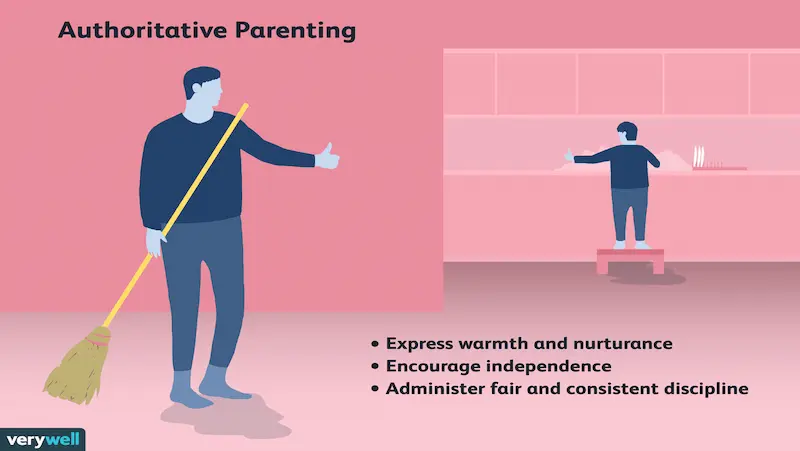
2. Authoritarian Parenting Style
Authoritarian parenting is characterized by strict rules, high expectations, and limited flexibility. Parents who adopt this style tend to be controlling and emphasize obedience and discipline over open communication.
- Key Characteristics: Authoritarian parents exhibit a high level of control, provide clear rules and expectations, enforce strict discipline, and often have a hierarchical parent-child relationship. They may lack warmth and tend to rely on punishments rather than explanations.
- Effects on Children: Children raised in an authoritarian environment may display obedience but could also exhibit lower self-esteem, decreased social competence, and difficulty in decision-making due to limited autonomy and restricted communication.
- Balancing Discipline and Nurturing: It is crucial for authoritarian parents to find a balance between discipline and nurturing. Incorporating more warmth, and open communication, and allowing some autonomy within appropriate boundaries can help promote a healthier parent-child relationship.
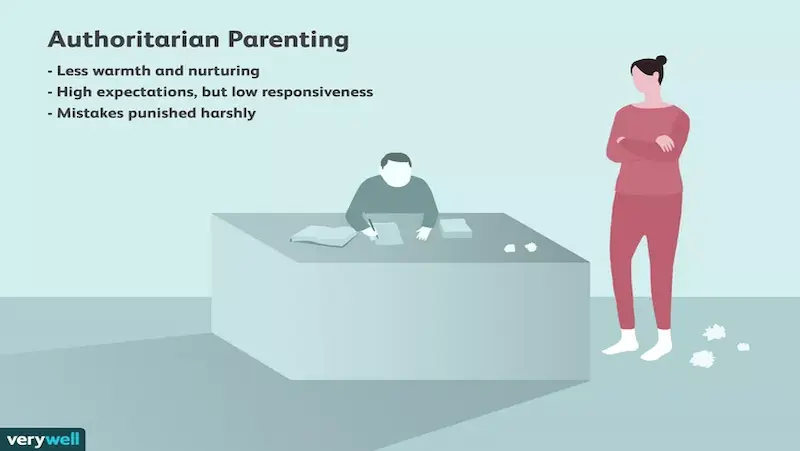
3. Permissive Parenting Style
Permissive parenting is characterized by low structure, lenient rules, and high warmth. Parents adopting this style tend to avoid setting boundaries and prioritize their child’s desires over enforcing discipline.
- Key Characteristics: Permissive parents have a relaxed approach, allowing their children to make their own decisions without clear guidelines or consequences. They often exhibit high levels of warmth, affection, and flexibility.
- Impact on Children: Children raised with permissive parenting may struggle with self-control, have difficulty following rules, and may exhibit entitlement and lack of responsibility due to the absence of clear boundaries and structure.
- Establishing Boundaries and Structure: Permissive parents can establish boundaries and structure by setting clear expectations, establishing consistent rules, and providing consequences for inappropriate behavior. Creating a balance between warmth and structure is essential for fostering healthy development.
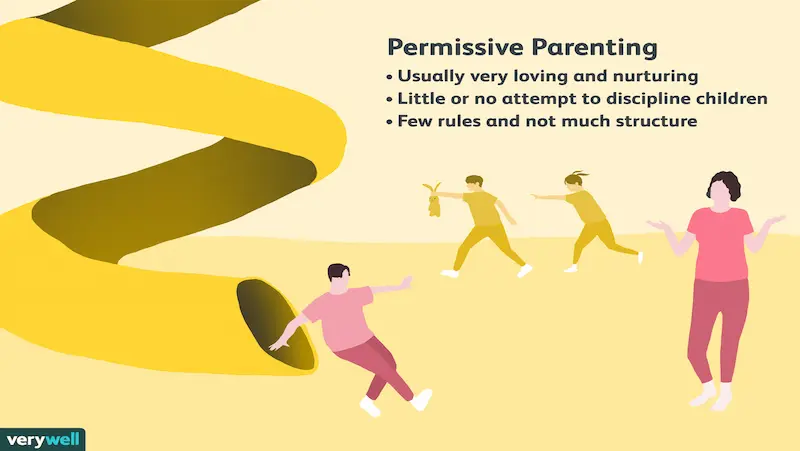
4. Uninvolved Parenting Style
Uninvolved parenting is characterized by neglect, lack of emotional involvement, and minimal control. Parents adopting this style are generally disengaged and show little interest or responsiveness to their child’s needs.
- Key Characteristics: Uninvolved parents prioritize their own needs or interests over their child’s well-being. They may be emotionally detached, neglectful, and fail to provide necessary guidance, support, or supervision.
- Effects on Children: Children raised in an uninvolved parenting environment may experience feelings of neglect, low self-esteem, and emotional insecurity. They may struggle with self-regulation, lack social skills, and face challenges in various areas of development.
- Engaging and Reconnecting: Uninvolved parents can begin to engage and reconnect with their children by actively listening, spending quality time together, seeking professional help if needed, and showing consistent support and involvement in their child’s life. Rebuilding trust and nurturing the parent-child bond is essential for positive growth. learn google coding for kids also.
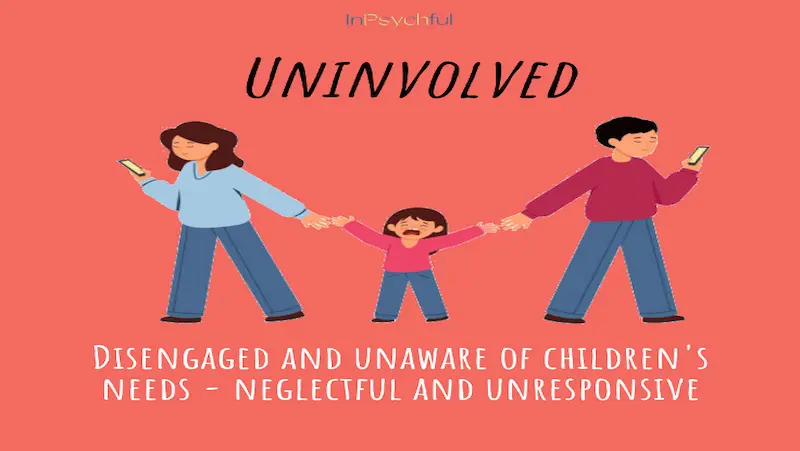
5. Blending Parenting Styles
Blending or combining parenting styles refers to the idea that parents may adopt different elements from various parenting styles to create a customized approach that suits their unique family dynamics. It recognizes that parenting styles are not fixed and can evolve over time based on the needs of both the parents and the child.
Parenting Styles Evolution: It is important to acknowledge that as children grow and develop, parenting styles may need to adapt. What works effectively during early childhood may require adjustments during adolescence. Parents may find themselves blending different styles to meet the changing needs of their children as they navigate different developmental stages.
Tips for Finding a Balanced Approach: To find a balanced approach that suits individual family dynamics, it is essential to consider the following tips:
- Reflect and Communicate: Take time to reflect on your parenting values and discuss them openly with your partner. Understand each other’s perspectives, strengths, and weaknesses as parents.
- Assess Your Child’s Needs: Consider your child’s unique temperament, personality, and developmental stage. Adapt your parenting style to meet their individual needs and provide appropriate support and guidance.
- Embrace Flexibility: Be open to adjusting your parenting style based on the situation and the needs of your child. Flexibility allows for a more responsive and adaptable approach.
- Seek Support and Information: Stay informed about different parenting styles, techniques, and research. Seek support from parenting resources, books, or professionals who can provide guidance and insights.
- Find a Middle Ground: Look for common ground and areas of agreement with your partner. Find ways to blend your parenting styles, incorporating elements that align with both your beliefs and values.
Remember, blending parenting styles is a dynamic and ongoing process. It requires open communication, flexibility, and a willingness to adapt as your child and family evolve. By finding a balanced approach, you can create a nurturing and supportive environment that promotes your child’s healthy development.
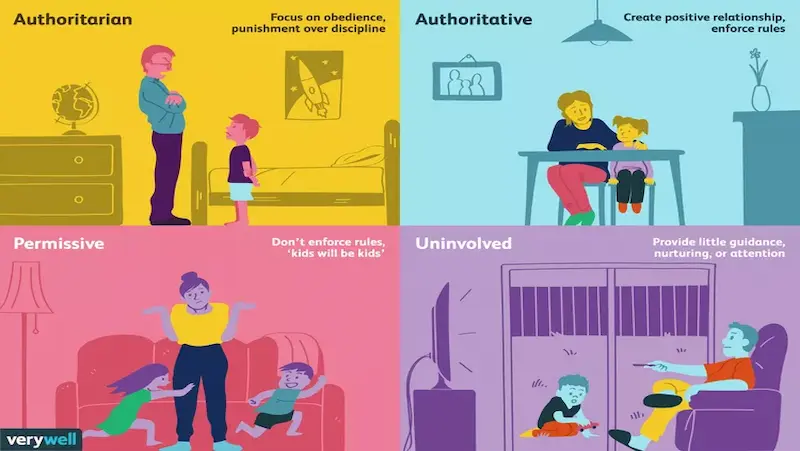
6. Cultural and Contextual Influences
Cultural and societal factors play a significant role in shaping parenting styles. Cultural norms, values, beliefs, and traditions influence the expectations placed on parents and the preferred methods of child-rearing.
For example, collectivist cultures may emphasize interdependence and conformity, while individualistic cultures may prioritize independence and self-expression. Societal factors such as economic conditions, social support systems, and historical context also impact parenting approaches.
External factors, including family dynamics, peer influence, media, and community norms, can influence parenting choices. Parents often draw from their own upbringing, social networks, and the expectations of their community when determining their parenting style. These external influences shape the beliefs and practices parents adopt in raising their children.
Cultural sensitivity is vital in parenting as it recognizes and respects the diversity of parenting styles across different cultures and contexts. It involves understanding and appreciating the values, beliefs, and practices of various cultural groups.
By being culturally sensitive, parents can incorporate cultural traditions and values into their parenting approach, while also ensuring their child’s well-being and development.
It is important for parents to be aware of their own cultural background and the potential biases or assumptions they may hold. Developing cultural competence allows parents to navigate and integrate various cultural influences into their parenting style while promoting a supportive and inclusive environment for their children.
Overall, recognizing the impact of culture and contextual factors on parenting styles and practicing cultural sensitivity can foster understanding, respect, and effective parenting practices that consider the unique needs and backgrounds of children and families.

Choosing the Right Parenting Style
When selecting a parenting style, it is crucial to reflect on your personal values, goals, and beliefs about parenting. Consider what kind of environment and upbringing you want to provide for your child.
Explore different parenting styles, such as authoritative, authoritarian, permissive, or uninvolved, and assess how they align with your values and desired outcomes. Reflecting on your own upbringing can provide valuable insights into your parenting choices. Consider the positive aspects you want to incorporate into your own parenting style and the aspects you may want to adjust or change.
Reflecting on both the strengths and weaknesses of your own upbringing can help you make informed decisions and create a better parenting approach for your child. Recognize that parenting styles may need to evolve and adjust as your child grows and develops.
What works during early childhood may require adaptation during adolescence. Stay attuned to your child’s changing needs and adjust your parenting style accordingly. Flexibility allows you to respond effectively to the unique challenges and circumstances that arise as your child progresses through different stages of development.
Keep in mind that there is no one-size-fits-all parenting style. Every child and family is unique, and what works for one may not work for another. It’s essential to find a parenting style that feels authentic to you, aligns with your values, and supports your child’s healthy development.
Remember that parenting is a dynamic journey, and it’s okay to make adjustments along the way. Stay open to learning, seek support from trusted resources or professionals, and be willing to adapt your parenting style as you gain new insights and experiences. The key is to create a nurturing, supportive environment that meets your child’s needs while staying true to your own values and goals as a parent.

Conclusion
In conclusion, choosing a parenting style is a deeply personal decision that requires self-reflection, consideration of individual values, and awareness of the impact of one’s own upbringing. By understanding different parenting styles and their characteristics, parents can align their approach with their desired goals for their child’s development.
Flexibility and adjustment are key as children grow and change, allowing parents to meet evolving needs. It is important to remember that there is no one-size-fits-all parenting style, and each family is unique. By being attuned to their child’s needs, staying open to learning, and creating a nurturing environment, parents can forge a parenting style that promotes their child’s well-being and helps them thrive.
To get your hands on more such educational and free resources on coding, robotics, game development, etc., do check out the Brightchamps Page now! Learn about robotics for kids and lego robotics for kids also.
Frequently Asked Questions
Different parenting styles include authoritarian, authoritative, permissive, and uninvolved. They impact child development in 2023 by influencing behavior, self-esteem, and overall well-being.
Determine your parenting style by reflecting on your values, and goals, and considering your child’s needs. Seek guidance from reputable sources and trust your instincts.
The authoritative parenting style offers benefits like fostering independence and self-discipline, but drawbacks can include potential challenges in finding the right balance between warmth and discipline.
While no specific new parenting styles have emerged in 2023, there may be evolving approaches influenced by changing societal dynamics and technological advancements.
The pandemic has likely influenced parenting styles, with an increased focus on emotional well-being, adaptability, and finding balance in managing remote learning, screen time, and family dynamics.
Effective strategies for positive discipline include clear communication, consistent expectations, modeling desired behavior, using logical consequences, and fostering a supportive and respectful environment.
Balancing technology and screen time involves setting boundaries, modeling healthy tech use, promoting offline activities, and integrating technology purposefully in line with chosen parenting style and values.
Common misconceptions about parenting styles debunked in 2023 may include the idea that one style fits all or that a single approach guarantees certain outcomes without considering individual circumstances.
Foster independence and resilience by allowing age-appropriate decision-making, encouraging problem-solving, promoting a growth mindset, supporting autonomy within safe boundaries, and fostering a supportive environment.
Cultural and societal factors influence parenting styles and trends by shaping values, traditions, and expectations around child-rearing. Understanding these influences helps parents navigate diverse approaches and respect different cultural practices.


 We are an army of educators and passionate learners from BrightChamps family, committed to providing free learning resources to kids, parents & students.
We are an army of educators and passionate learners from BrightChamps family, committed to providing free learning resources to kids, parents & students.







